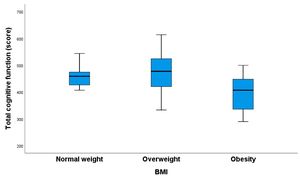A recent study published in Scientific Reports has unveiled significant findings on the prognostic value of red blood cell distribution width (RDW) as it relates to patients undergoing amputation for diabetic foot complications. The research indicates RDW can independently predict mortality rates and hospital length of stay, potentially reshaping risk assessment practices in diabetic foot care.
With global diabetes prevalence expected to rise from 463 million cases to approximately 700 million by 2045, the need for innovative solutions has never been greater. Diabetic foot complications, including ulcers and gangrene, pose severe threats to patients' health and must often result in surgical interventions like amputation. The study was motivated by the urgent need to improve prognostic evaluations within this demographic.
The research team at Severance Hospital analyzed retroactively collected data on 415 patients who underwent lower extremity amputation from January 2009 to January 2019. They found the optimal preoperative RDW cutoff value was 14.5%, which marked significant differentiation between patients likely to experience elevated mortality post-operation and those with more favorable outcomes.
The associated findings are stark. The study found patients with RDW levels at or above this threshold had more than double the risk of all-cause mortality following their surgery (hazard ratio of 2.55, confidence interval 1.55-4.19, and P < 0.001). “A preoperative RDW of 14.5% was the optimal cutoff value for predicting all-cause mortality," the authors noted, underscoring the test's possible utility as part of standard clinical assessments.
What makes this research particularly compelling is its dual focus on both mortality and the duration of hospital stays. High RDW was found to correlate with prolonged hospital lengths of stay, with RDW ≥ 14.5% associated with extended recovery times (odds ratio of 2.17, P = 0.004). Patients exhibiting higher RDW levels spent significantly longer periods hospitalized—factors known to contribute to increased healthcare costs and potential complications.
Historically, RDW measurements have been utilized primarily to inform anemia diagnoses. Recently, they have gained traction as prognostic indicators across various medical conditions, including cardiovascular diseases and diabetes. This study positions RDW as even more pivotal, drawing attention to its prognostic potential for individuals facing serious complications due to diabetes.
At the time of surgery, patients had multiple comorbidities, creating complex clinical assessments. The study's authors advocate for heightened monitoring of patients with elevated RDW, asserting, “Higher preoperative RDW was an independent predictive factor for increased all-cause mortality and prolonged hospital length of stay after diabetic foot amputation.” They recommend integrating RDW screening to facilitate more effective patient management strategies.
Added to the conversation about diabetes management, this research also prompts consideration of broader systemic healthcare issues. Prolonged hospitalization can lead to significant socio-economic strains, both on healthcare systems and the individuals affected. By offering easily accessible and affordable RDW testing, clinicians can potentially improve outcomes and reduce the burdens associated with prolonged hospital stays.
Despite its promising conclusions, the study has limitations, including its retrospective design and the fact it was conducted at a single tertiary medical center, possibly affecting the generalizability of its findings. Nonetheless, the insights gleaned from this large-scale analysis provide compelling evidence for RDW's role as a relevant prognostic tool.
Looking forward, the authors urge multidisciplinary teams to refine monitoring and management protocols for patients showing elevated RDW levels. They conclude, “Our results suggest patients with high preoperative RDW should undergo more intensive, multidisciplinary management and careful monitoring to improve outcomes after diabetic foot amputation.” This call to action highlights the pressing need for updating clinical practices to reflect the latest findings, ensuring diabetic foot patients receive the comprehensive care they need.
With diabetes anticipated to mind-bogglingly increase over the years, studies like this bring necessary attention to managing its complications attentively. The findings not only elaborate on RDW's predictive capabilities but also demonstrate how simple, cost-effective measures can have significant impacts on treatment outcomes.



